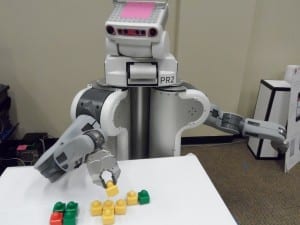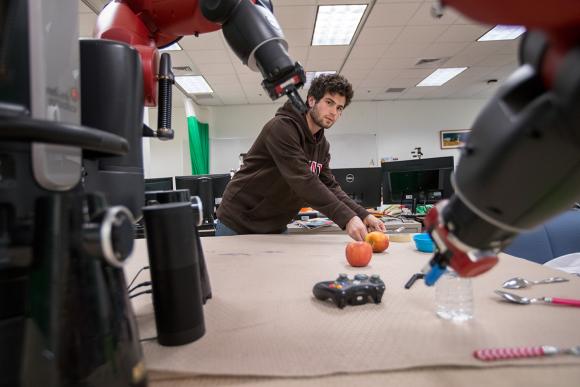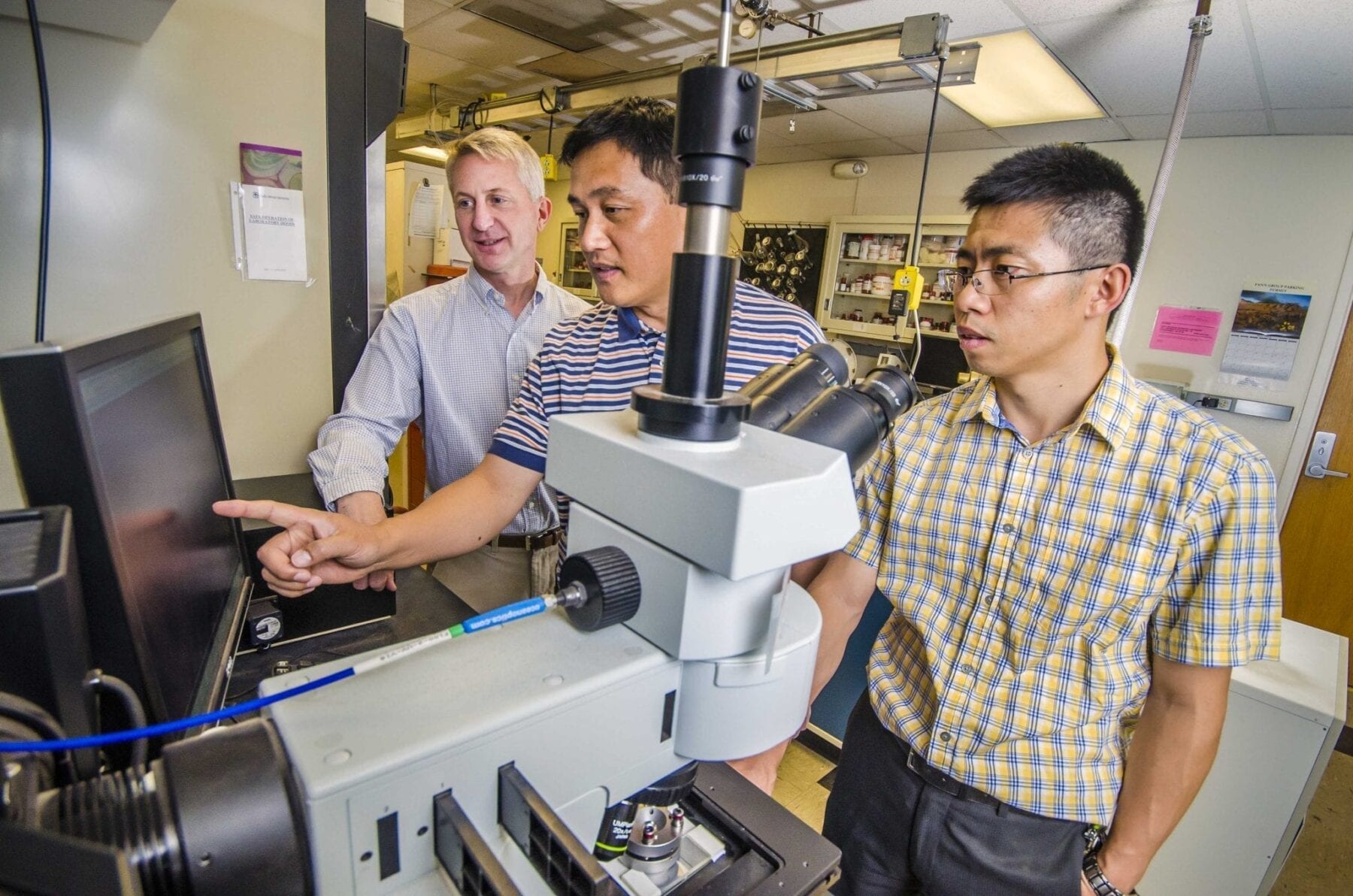Sometimes it takes a village to teach a robot.
University of Washington computer scientists have shown that crowdsourcing can be a quick and effective way to teach a robot how to complete tasks. Instead of learning from just one human, robots could one day query the larger online community, asking for instructions or input on the best way to set the table or water the garden.
“We’re trying to create a method for a robot to seek help from the whole world when it’s puzzled by something,” saidRajesh Rao, an associate professor of computer science and engineering and director of the Center for Sensorimotor Neural Engineering at the UW. “This is a way to go beyond just one-on-one interaction between a human and a robot by also learning from other humans around the world.”
Learning by imitating a human is a proven approach to teach a robot to perform tasks, but it can take a lot of time. Imagine having to teach a robot how to load the dishwasher – it might take many repetitious lessons for the robot to learn how to hold different types of cookware and cutlery and how to most efficiently fill the machine.
But if the robot could learn a task’s basic steps, then ask the online community for additional input, it could collect more data on how to complete this task efficiently and correctly.
Read more . . .
The Latest on: Robot learning
[google_news title=”” keyword=”Robot learning” num_posts=”10″ blurb_length=”0″ show_thumb=”left”]
via Google News
The Latest on: Robot learning
- Robotics brings fun in learningon April 27, 2024 at 9:03 am
ONE of the country's leading solutions integrators is showing teachers and students the most advanced and creative ways to teach and learn programming and robotics. Radenta Technologies introduced the ...
- China unveils “Tiangong”: First fully electric humanoid robot capable of running at 6 km/hon April 27, 2024 at 5:10 am
China's Beijing Humanoid Robot Innovation Center unveils "Tiangong," a robot capable of human-like running at 6 km/h.
- Machine learning-powered robot streamlines genetic research processon April 26, 2024 at 9:26 pm
University of Minnesota Twin Cities researchers have constructed a robot that uses machine learning to fully automate a complicated microinjection process used in genetic research.
- 'Like a second family': Wilsonville High School team builds robots, friendshipon April 26, 2024 at 7:06 pm
A Wilsonville High School team is teaching kids how to build a robot from the ground up — with its members learning coding, confidence and comradery.
- 3 Robotics Stocks That Will Make Early Investors Exceedingly Wealthyon April 26, 2024 at 11:19 am
InvestorPlace - Stock Market News, Stock Advice & Trading Tips Robotics has moved far before the realm of science fiction, revolutionizing ...
- China’s S1 robot impresses with its ‘human-like’ speed and precisionon April 26, 2024 at 8:35 am
Astrobot's S1 humanoid showcases unprecedented speed and dexterity in household tasks, marking a notable advancement in robotics.
- Europe taps deep learning to make industrial robots safer colleagueson April 26, 2024 at 1:07 am
European researchers have launched the RoboSAPIENS project to make adaptive industrial robots more efficient and safer to work with humans.
- Robots are taking over Mansfield at Shawshank Showdownon April 25, 2024 at 10:24 pm
In celebration of 10 seasons of Team 5413 Stellar Robotics providing STEAM learning opportunities to students K-12 in Richland and surrounding counties, Stellar is excited to announce an ...
- Automated machine learning robot unlocks new potential for genetics researchon April 25, 2024 at 5:00 pm
Researchers have constructed a robot that uses machine learning to fully automate a complicated microinjection process used in genetic research. University of Minnesota Twin Cities researchers have ...
- Sanctuary’s new humanoid robot learns faster and costs lesson April 25, 2024 at 12:41 pm
Sanctuary AI often isn’t mentioned in the same breath as humanoid robotics firms like Boston Dynamics, Agility, Figure and 1X, but the Canadian company has been operating in the space for some time.
via Bing News











